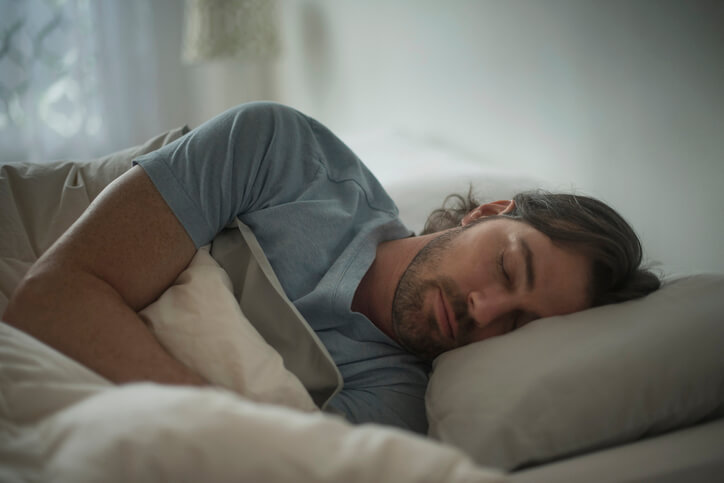Tune into the HealthTalks NOW Podcast
All About the 4 Most Common Sleep Disorders
Listen Now
Everyone’s had a dream where you experience the feeling of not being able to move, but if this has happened while you’re in the process of falling asleep or waking up, that’s a sleep disorder known as sleep paralysis. During sleep paralysis, your mind is conscious, but you’re unable to move your body. Here, we’ll outline what causes sleep paralysis and how you can lower the chances of it happening to you. If you want to learn more about other sleep disorders, visit Baptist Health here.
• An inability to move your body when falling asleep or waking up, which can last for a few seconds or several minutes
• Being consciously awake
• Being unable to speak during the episode
• Having hallucinations and sensations that cause fear
• Feeling pressure on your chest
• Difficulty breathing
• Feeling that death is approaching
• Sweating
• Headaches and muscle pains
• Paranoia
While there aren’t any proven causes of sleep paralysis, there are theories about why it occurs. The most common theory is that it’s related to a disruption of REM cycles, which is described below along with other possible causes:
• REM Sleep Problems. Sleep paralysis is believed to relate to a problem regulating REM sleep. During REM, your body is paralyzed so that you’re unable to act your dreams out. This muscle relaxation, called atonia, may occur when you’re awake, which can leave you unable to move.
• Psychiatric disorders. Psychiatric disorders like anxiety and depression have also been shown to have a strong association with sleep paralysis. The use of alcohol or drugs has also been linked to sleep paralysis.
• Sleeping position. The majority of people who’ve experienced sleep paralysis say that it occurs when they’re sleeping on their backs. Although less frequently, others have reported that it occurs when sleeping on their sides or stomachs.
• Timing. The vast majority of people report that sleep paralysis happens when they’re falling asleep, which is known as a hypnagogic phenomenon, but it can also happen when waking up from sleep. It typically occurs at night, but it can also happen during daytime naps.
• Other sleep disorders. Sleep paralysis can also occur in association with other sleep disorders that cause fragmented sleep, including obstructive sleep apnea and narcolepsy. Symptoms such as sleepiness, hallucinations, and cataplexy might suggest narcolepsy. Treatment of those conditions may reduce episodes of sleep paralysis.
While there aren’t any specific medical procedures that can treat this condition, there are sleep aids and different kinds of treatment that can help you overcome sleep paralysis. Here are some things you can do to help get a better night’s sleep and reduce the risk of sleep paralysis:
• Reduce stress. Do what you can to reduce stress, especially just before you go to bed.
• Keep a regular sleeping and waking schedule. Keeping bedtime and wake-up times consistent, even on weekends and holidays, can help reduce your risk of sleep paralysis.
• Daily exercise. Exercising for at least 30 minutes a day is helpful, but not within two hours of going to bed.
• Reducing light exposure. Reducing light exposure in the evening and using night lights for bathroom trips can help ensure a better night’s sleep.
• Avoid eating a big meal, alcohol, nicotine, and drugs at night. These can cause disruptions in your sleep, which raises your risk of sleep paralysis.
• Avoid sleeping on your back. This can make sleep paralysis more likely to occur.
If you’re having problems with sleep paralysis, please find a Baptist Health sleep care provider near you. If this is an emergency, please dial 911.